
Workshop
The Paralympic Games: where 15% is the protagonist
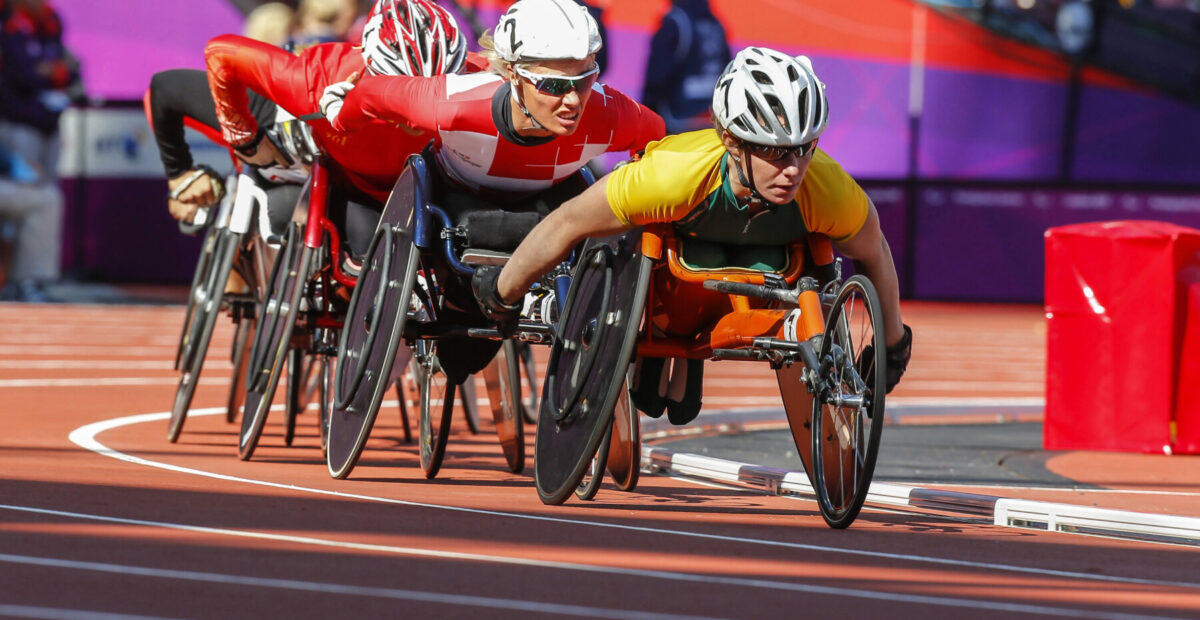
How much do we know about the Paralympic Games? Little or a lot, it doesn’t matter: in this article we discover their history, some curiosities, the differences with the Olympic Games and the elements that make them a unique sporting event, different from all the others.
These days, in Tokyo, the sixteenth edition of the Paralympic Games in history is taking place. The slogan of these Games is “United by Emotion”, and 163 delegations are participating in 22 sports disciplines. In this article we find out more about their history, their name and the Paralympic flame, as well as the big campaign of the Tokyo 2020 Paralympic Games: #WeThe15.
Why are they called the Paralympic Games?
As can be deduced, the word “Olympic” comes from Olympia, the place where the Olympic Games were born in Greece. (to learn more about the Olympic Games, we invite you to read this article).
But what does “Paralympic” mean?
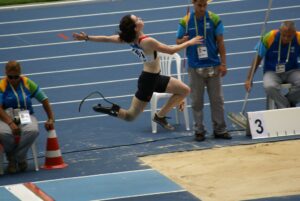
Originally, the name was derived from the union between the words “para”, which stood for “paralysis” or “paraplegia” (since at the time only people with this form of physical disability participated), and “Olympics”. However, later the term was adopted because, in Greek, the prefix παρά (parà) means “together with”, to designate precisely an event organized together with the Olympic Games.
In 2001 the International Olympic Committee and the International Paralympic Committee signed an agreement that decreed the automatic inclusion of the Paralympic Games in the vote to decide the host city of the Olympic Games (both summer and winter).
Who is Ludwig Guttmann, father of the Paralympics?
Ludwig Guttmann was a Jewish neurologist who became a naturalized British citizen after his escape from Nazi Germany before the start of World War II.
Guttmann was considered the top German neurosurgeon until the Nazis banned Jews from practicing medicine. Guttmann then became director of the Jewish Hospital in Breslau between 1933 and 1937. In 1938 he disobeyed the Gestapo’s order to not care for non-Jewish patients, deciding to let anyone into the hospital. Facing pressure from the Gestapo to justify his disobedience, Ludwig was forced to flee the country and sought help from the Council for Assisting Refugee Academics (CARA) in order to settle in England.
Between World War I and World War II, the mortality rate from paraplegia due to trauma in the British Army reached 80%. It was for this reason that Guttmann conducted research on the care and rehabilitation of patients with spinal cord injuries. Based on this study, the decision was made to open a center to treat people with this type of injury.
In 1944, under the direction of Dr. Guttmann, the Stoke Mandeville Hospital in Aylesbury, southeast England, became operational. Initially open only to wounded soldiers, it later treated civilians as well. Guttmann’s main objective was the reintegration of patients as respected members of society, the objective that he achieved by applying his own methods to the treatment.
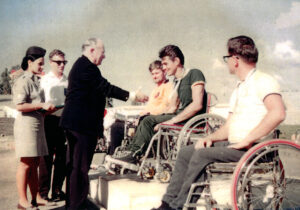
How the Paralympic Games came about at the hands of Guttmann?
In his youth, Guttmann had played sport and knew its importance. He considered it to be an activity that helps to regain strength, coordination and stamina, and which also helps to counteract the psychological problems that people with disabilities may experience to a greater or lesser extent: isolation, low self-esteem, anxiety, etc.
For this reason, at Stoke Mandeville Hospital, people in wheelchairs began to play sports such as basketball, archery, netball, javelin, billiards… and in 1948 the Stoke Mandeville Games took place, to which a team of patients from another hospital was invited. In 1949, 37 athletes from six hospitals participated, and a movement similar to the Olympics began to take shape, but featuring athletes with disabilities. In 1951 came 126 participants from all over the United Kingdom and in ’52 athletes from another country (the Netherlands) participated for the first time. Shortly thereafter, in 1959, there were 360 participants from 20 countries.
So came 1960, the year in which the first Paralympic Games in history took place, shortly after the Olympic Games in Rome. There were 209 athletes from 18 countries participating in eight disciplines. Only people with spinal cord injuries participated in those Games.
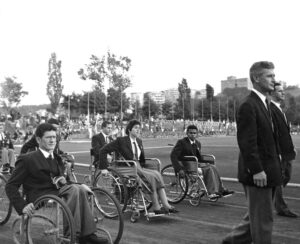
The Tokyo 2020 Paralympic Games
Today, the Paralympic Games include a number of disciplines divided into subcategories, depending on the type of disability of the participants. Disabilities can include muscle power, passive range of movement, total or partial absence of limbs, short stature, hypertonia, ataxia, athetosis, visual impairment and intellectual impairment. These categories are subdivided in turn and vary from one sport to another.
These Games are hosting 539 events from 22 sports disciplines (in this edition badminton and taekwondo were added, taking the place of 7-a-side soccer and sailing, which were cancelled due to lack of international participation).
Tokyo 2020 opening ceremony
Although the ceremony has almost all the same elements of the Olympic Games, there are some peculiarities. One of them is that, in the Paralympic Games, it is not Greece that parades first, because it is not the birthplace of this event.
The order of countries in the parade is determined by the alphabetical order of the local language: for example, in Japanese, Iceland and Ireland are first on the list. Nevertheless, the parade was opened by the Paralympic Refugee Team. Instead, the local delegation, Japan, closed it.
The Paralympic Flame
As we wrote in the article about the Olympic Games, the flame of that event starts from the birthplace of the Games which is Olympia, in Greece. In the Paralympic Games, however, the flame begins in the host country, and it is the host country that decides how the flame will be lit.
On the occasion of the Paralympic Games in London 2012 it was decided to light a torch in each of the four nations that make up the United Kingdom (Wales, England, Northern Ireland and Scotland), and then unify them to light the Olympic flame in the stadium in Stoke Mandeville, the city where Ludwig Guttmann gave life to the Paralympic Games.
In Athens 2004, the flame was lit in the heart of the city, at the Theseion or temple of Hephaestus, in honor of the god of fire who, according to Hellenic mythology, possessed a disability, the limp, having been thrown down from Olympus by his mother Hera.
In Tokyo 2020, the flame was lit in each of Japan’s 47 prefectures by different people and at symbolic locations, such as the iconic Genbaku Dome, also known as the “Bomb Dome,” now a Peace Memorial located at the site where the first atomic bomb was dropped.
Delegations to the Tokyo 2020 Paralympic Games
There are 163 delegations participating in these Paralympic Games, including the Paralympic Refugee Team (RPT), the Russian Olympic Committee (since the Russian Federation has been penalized and cannot participate as a nation) and the delegation of Afghanistan, whose athletes were absent at the time of the ceremony. This was due to the fact that, on August 16, following the Taliban takeover of Kabul, Afghanistan had withdrawn from the event. Its two representatives, taekwondist Zakia Khudadadi and runner Hossain Rasouli, however, managed to arrive in Tokyo on August 28 and were able to take part in the Games.
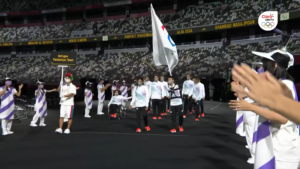
#WeThe15, the campaign of the Tokyo 2020 Games
15% of the world’s population has some form of disability, and this campaign aims to focus attention on these people. The goal of “WeThe15” is to break down barriers and “initiate change in the next decade by bringing together the largest coalition of international organizations from the worlds of sports, human rights, politics, communications, business, arts and entertainment”.
“Like race, gender and sexual orientation, we want to have a movement all persons with disabilities can rally behind. A global movement that is publicly campaigning for disability visibility, inclusion and accessibility”, according to what the official website of the campaign explains.
The Paralympic Games, although much less famous than the Olympic Games, are an opportunity to support the athletes of our countries (and those of other countries) so that they can achieve a better place in the world of sport and society.
The Paralympic Games are an opportunity to understand the resilience of the human being, the ability that each of us has to overcome our limitations, to do more than we think possible, to be reborn from pain.
And, more than anything else, the Paralympic Games are, just as their creator Ludwig Guttmann dreamed, an opportunity to give visibility to people with disabilities, so that they are respected like all others, and to generate spaces in which they can develop their potential. No more and no less.
Follow our social media to know more #funfacts about the Paralympic Games:
#paralympics • It’s the first time that Paralympic medals have been designed for athletes who are visually impaired.
It's an especially meaningful year for the athletes, as it's also the first time US Paralympians will earn the same pay as US Olympians. #Tokio2020 pic.twitter.com/ycQ0dhxdtL— United World Project (@UWP_official) September 2, 2021






